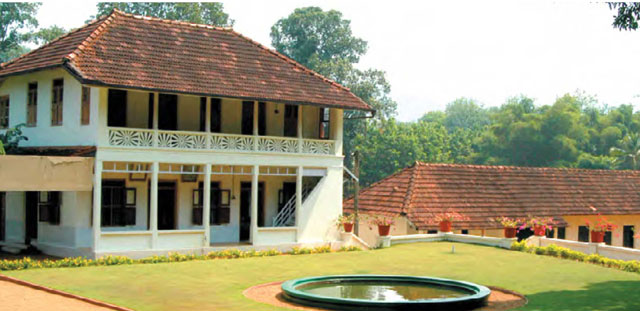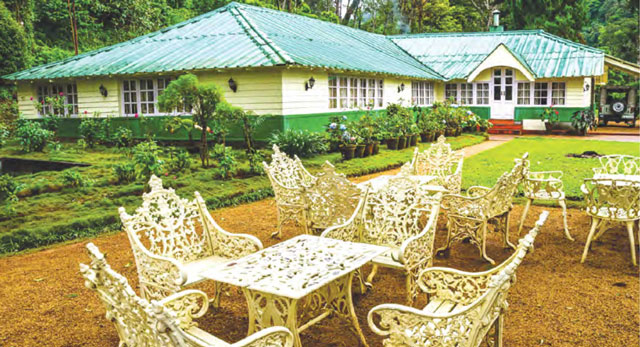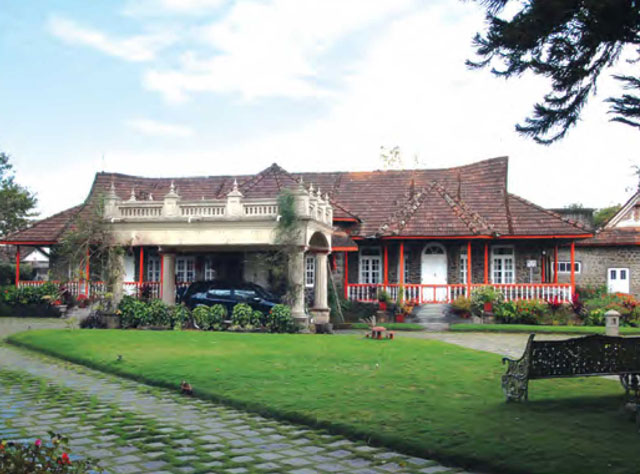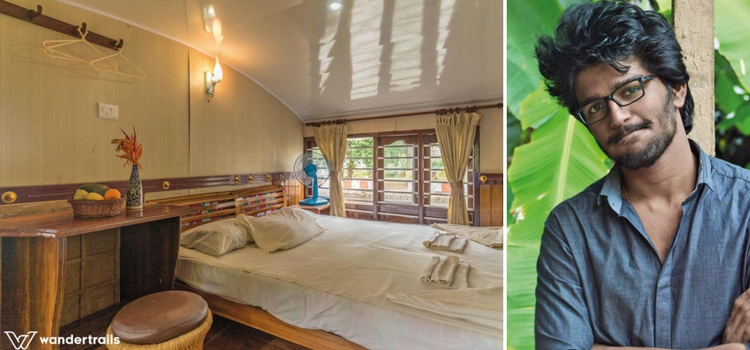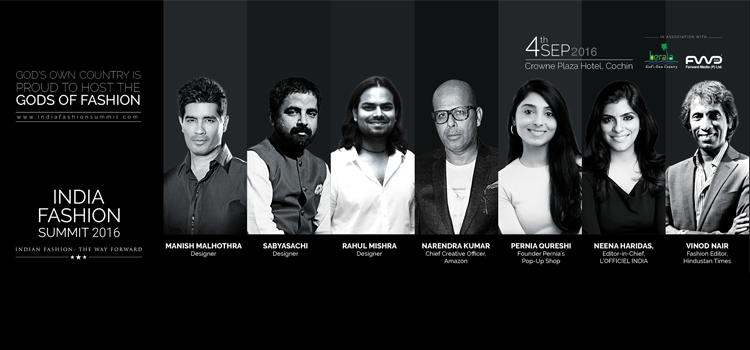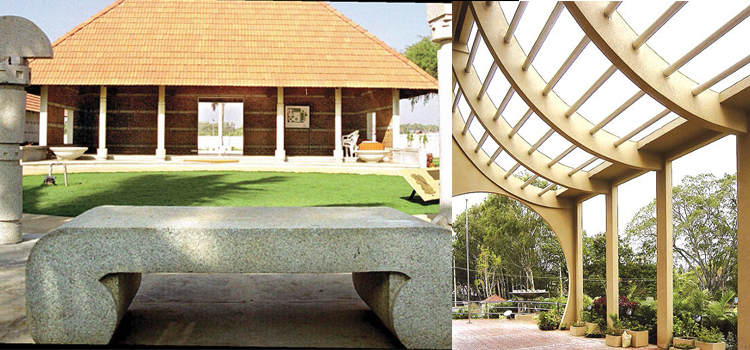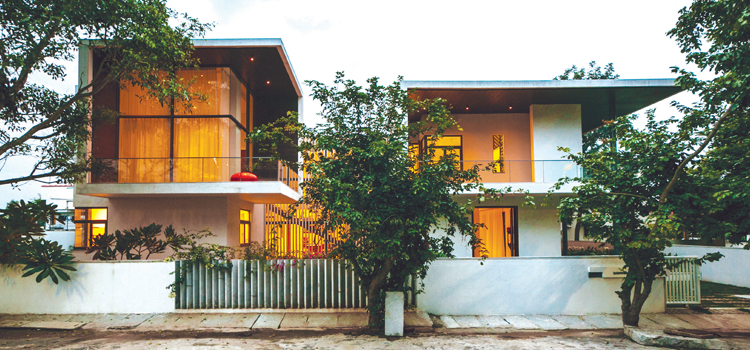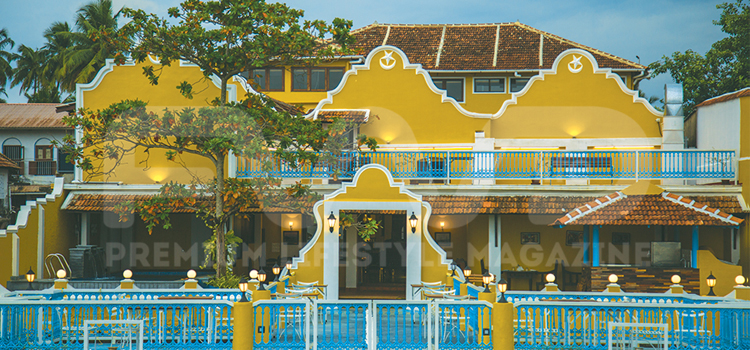In Focus
Amidst The Green : Kerala’s Estate Bungalows
Bungalows that uphold our rich agricultural heritage and have stood the test of time.
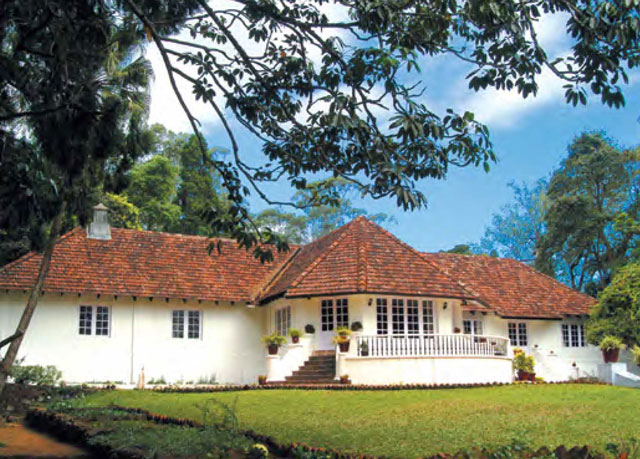
Bungalows that uphold our rich agricultural heritage and have stood the test of time.
Text: George Abraham Pottamkulam Photos: Stayhomz
The shores of Kerala have always spread its red carpet to seafarers from faraway lands. The advent of the colonial British, chiefly the adventurous and enthusiastic planters, marked a sweeping transformation in the life and topography of the high ranges of Kerala. The rich harvest and the amiable climate of the land were the main factors that tempted many of them to settle down. The Estate Bungalows, they built amidst the plantations are mostly the exact replicas of the Victorian countryside ranch homes with colonial architecture. The Kerala architecture remarkable for design, with its complicated but elegant and magnificent dimensions of carpentry, used the Thachushasthra (the science of house-building). It must have attracted the curious Saippu (the Malayalee slang for Sahib), for some used the native carpentry to enhance and beautify their residences with woodwork. To this day, even after nearly two centuries, these bungalows retain their charm and elegance, not to forget the grandeur.
Ashley Bungalow Tea Estate
The Ashley Bungalow was built in 1875 by Henry Baker and his associates. The building stands commanding a magnificent view facing south, onlooking the valley which flows down gently to the plains below. Ashley Estate is one of the earliest clearings on the hills of Central Travancore in Peermade. The bungalow has steps with scalloped ledges which is a curious mixture of local styles and English architecture. The garden is landscaped with a green lawn fringed on the southern side with trees. The westerly wind sweeps across the drawing room, set majestically with large doors with spans of glass running the full southern side. Seated there on the plush sofas you will feel like a King, and would leisurely love to sip a cup of tea from the estate. The second highest peak on the Western Ghats called Amrithamedu, shoots up from the boundaries of this estate. From the drawing room on the western side, there is a little passage that ends just before a single room, tucked in a corner. A large bedroom adjacent to the passage on the western side is also unique with tar and black oxide laid on its floor. It is furnished with massive cots and furniture made in abstract Victorian and mid-Victorian styles. All four bedrooms have fireplaces and large bathrooms. This spacious home, with lofty ceilings made of wood and tiled floors, is still kept in its old grandeur by its present owners, A V George and Company.
Kalaketty Estate Bungalow Rubber Estate
The beautiful two-storied country house was built in 1930 on property granted to Mr. K.V. Joseph by M.E.Watts, Dewan of Travancore. The building is situated amidst a lush green 150-acre estate of mixed plantations of rubber, coffee, cocoa, and others. The steeply pitched, tile-roofed, double storied house has front balconies and tiny verandahs which run the full front of the south-east facing bungalow. It is a typical blend of early Syrian Christian architecture with the traditional Malayali style of numerous cross ventilated doors and windows. On the first floor, a small part of the hall is set as a library from where one can step into the balcony offering a magnificent panoramic view of the fields below. The single large bedroom with heavily timbered doors and windows has red oxide polished floors and are spacious and richly furnished. The walls plastered with limestone stucco added with egg white are neatly finished and kept impeccably white to this day without losing the mirror like shine. The photographs which adorn the walls of the house clearly define a rich lineage that runs down to three generations. A curious variety among the photographs is that of Mr. Watt -an English man who represented rulers who handed over the title deed of the estate to the Pottamkulam family.
Downton Heritage Cardamom Estate
The Bungalow is situated on a clearing surrounded by cardamom plantation on one side and a natural forest on the other side which has varied flora and fauna. Here the plantation crops of the Downton Estate and the greens of nature coexist in perfect harmony. The Estate, which has an original title deed dated 1912, was granted to a band of local planters by the rulers of Travancore. J. R. Vincent, the prominent rubber planter in Mundakayam Valley, bought the initial clearing of over six hundred acres in 1926, and named it the Downton Estate, Downton being a village near Southampton England was where the Vincents used to go cycling during their childhood. He built a colonial style ranch home, the Downton Bungalow in 1930. The Downton Estate was brought by the K.I. Varkey Karimpanal in 1947 from his brother A D Vincent. One part of 80 acres is presently owned by the Kayalakkakom family. The cottage style construction features both masonry and woodwork. Though the original slate roof has been replaced, the sheet roof was a common sight in the British Era. It’s a fine example of practical, function based architecture. Much of the original furniture has been replaced, it still retains the charm of cottage living.
Glenrock Estate Bungalow Coffee Estate
Built as the summer home of Her Highness Sethu Lakshmi Bai, the erstwhile Regent Maharani of the Travancore Royal Family, the Regent House named Indira Mandiram (mansion of lord Indira) in 1926, is a private residence situated at Kuttikanam in Idukki district. Locally known as Ammachi Kottaram, the mansion is a curious mix of Kerala and Colonial style of architecture. The bungalow sits in a verdant estate of coffee, tea and cardamom. The exterior granite walls of the home have been witness to many historic events in the time of British India. The arched doorways lead to spacious rooms with high ceilings. Large windows and skylights bring in ample light and air. Some parts of the house retain the traditional flooring and the detailed woodwork. The verandahs of this once royal residence, overlook scenic views of the Western Ghats. This stately home was bought by was bought by prominent entrepreneur, Mr K. V. Thomas Pottamkulam, in 1950 and converted to Hotel International, considered as a fine halt for travelers from lowland Travancore to Periyar. It changed hands in 1958 to the present owner, Michael A Kallivayalil. The house retains its granite foundation and many original features, despite renovations over the years.
Cover Story
Unraveling the Mystique: Leap Day Myths from Around the Globe

Leap day, that enigmatic extra day added to our calendars every four years, has long been shrouded in mystery and folklore. Across cultures and continents, various myths and beliefs have emerged surrounding this rare occurrence. Let’s embark on a journey to explore some of the fascinating leap day myths from around the world.
The Irish Tradition of Women Proposing:

One of the most well-known leap day traditions originates from Ireland. According to Irish folklore, St. Bridget struck a deal with St. Patrick, allowing women to propose to men every leap day. It was believed that this reversal of traditional gender roles would bring good luck and fortune to the couple. While this custom may seem antiquated in modern times, it serves as a reminder of the evolving nature of societal norms and the persistence of age-old customs.
Greek Superstitions:
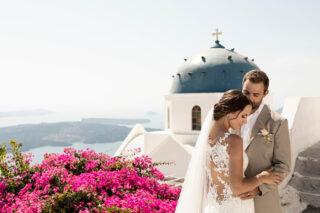
In Greece, leap years are often associated with superstitions and caution. It is believed that any actions taken during a leap year, especially major decisions like marriage or starting a business, may be fraught with misfortune. Consequently, many Greeks prefer to postpone significant endeavors until the following year, avoiding the perceived risks associated with leap years. This superstition highlights the deeply ingrained cultural beliefs surrounding auspicious timing and the fear of tempting fate.
Leap Day Babies:

For individuals born on February 29th, known as leap day babies or leaplings, their birthdays hold a special significance that transcends conventional calendar dates. In various cultures, leap day babies are said to possess unique qualities or destinies. Some believe they are endowed with good luck, while others consider them to be blessed with eternal youth. Regardless of the superstitions, leap day babies serve as a reminder of the extraordinary nature of time and the quirks of our calendar system.
The Perplexing Aztec Calendar:

Among the ancient civilizations of Mesoamerica, such as the Aztecs, leap years held particular significance within their complex calendrical systems. The Aztec calendar, known as the Xiuhpohualli, consisted of 365 days divided into 18 months, with an additional five “nameless” days at the end of the year. To reconcile the solar year with their calendar, the Aztecs periodically inserted leap days, known as Nemontemi, to ensure alignment with the agricultural and celestial cycles. These leap days were associated with rituals and ceremonies, underscoring the interconnectedness of time, culture, and cosmology.
Lunar Leap Day in China:

In traditional Chinese culture, leap years are intricately linked to the lunar calendar and the celebration of the Chinese New Year. Known as a “leap lunar month,” this phenomenon occurs approximately every three years within the Chinese calendar cycle. During a leap lunar month, an extra lunar month is added to maintain synchronization with the solar year. This adjustment ensures that traditional festivities, such as the Lunar New Year, occur at the appropriate seasonal intervals, preserving centuries-old customs and cultural heritage.
Leap day serves as a captivating intersection of timekeeping, tradition, and folklore, weaving a tapestry of myths and beliefs from diverse cultures around the world. Whether it’s the Irish tradition of women proposing, Greek superstitions, the enigmatic Aztec calendar, or the intricacies of the Chinese lunar cycle, leap day continues to captivate our imagination and inspire wonder. As we embrace the fleeting nature of this extra day, let us reflect on the rich tapestry of human ingenuity and the enduring legacy of our collective beliefs and customs.
Beauty
Jennifer Lopez’s Daring Fashion Choice: A Wetsuit-Inspired Gown Steals the Spotlight on the Red Carpet
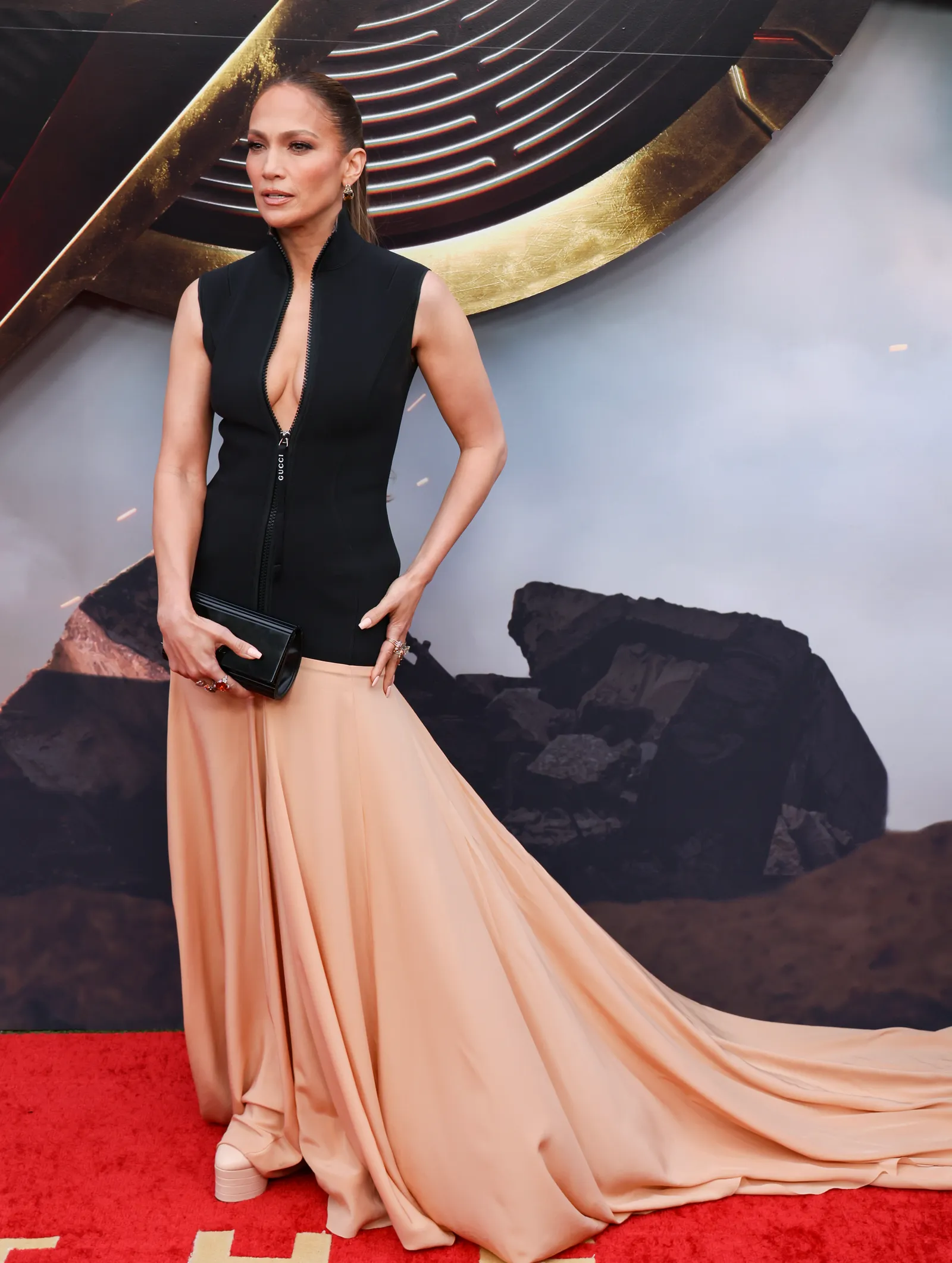
When it comes to making a statement on the red carpet, Jennifer Lopez is no stranger to turning heads. The multi-talented star recently attended the premiere of “The Flash” to support her husband, Ben Affleck, who reprises his role as Batman. While their public display of affection grabbed attention, it was their coordinated and eye-catching outfits that truly stole the show. Lending her style expertise, J Lo stepped out in a bold and unconventional gown inspired by wetsuit designs, proving that she continues to push the boundaries of fashion.

Styled by the talented duo Rob Zangardi and Mariel Haen, her gown was a striking creation from Gucci’s resort 2023 collection, fresh off the runways of Seoul. The ensemble featured a sleek black zip-up bodice reminiscent of scuba suits, adding a unique and unexpected element to the traditional red carpet attire. Contrasting the sporty top, a flowing peach satin maxi skirt with a long train exuded elegance and femininity.
While the gown was originally presented on the runway with a fully zipped-up collar, J Lo made a daring choice to unzip hers just above the belly button. This modification transformed the look into a more revealing and sensual ensemble, showcasing the star’s confidence and willingness to embrace risks. With every step, the gown accentuated her enviable figure, commanding attention and setting a new standard for red carpet fashion.
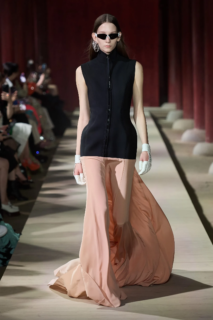
To complete her show-stopping look, Jennifer Lopez made careful choices when it came to accessories. She opted for a pair of white leather platform pumps from Gucci, elevating her height and adding a touch of sophistication. The choice of accessories further emphasized the fusion of sporty and elegant elements in her outfit. Complementing the gown’s black bodice, she adorned herself with exquisite jewelry pieces from Daniela Villegas and Le Vian, adding a touch of luxury and sparkle. Carrying a sleek black leather clutch bag by Kurt Geiger, J Lo effortlessly showcased her ability to curate every aspect of her ensemble.
One cannot overlook the sartorial synchrony between Jennifer Lopez and her husband, Ben Affleck. Affleck, known for his impeccable red carpet style, consistently mirrors the overall vibe of J Lo’s look. For the premiere, he opted for an all-black ensemble, comprising a sleek black suit, a matching black shirt, and polished black leather dress shoes. The couple’s synchronized fashion choices not only showcase their undeniable chemistry but also demonstrate their commitment to presenting a cohesive and visually appealing appearance together.
Jennifer Lopez continues to push fashion boundaries and surprise the world with her red carpet choices. Her wetsuit-inspired gown at “The Flash” premiere exemplifies her fearless approach to style. By incorporating sporty elements into a sophisticated ensemble, she proves that fashion can be both daring and elegant. Alongside her partner Ben Affleck, the power couple’s synchronized looks create an awe-inspiring visual spectacle, solidifying their status as fashion icons. J Lo’s ability to effortlessly command attention and make fashion statements ensures that she remains an influential force in the world of celebrity style.
Fashion
Unveiling the Mystery : The Rise of ‘Quiet Luxury’ – The Viral and Ultra-Expensive Fashion Trend Followed by Billionaires
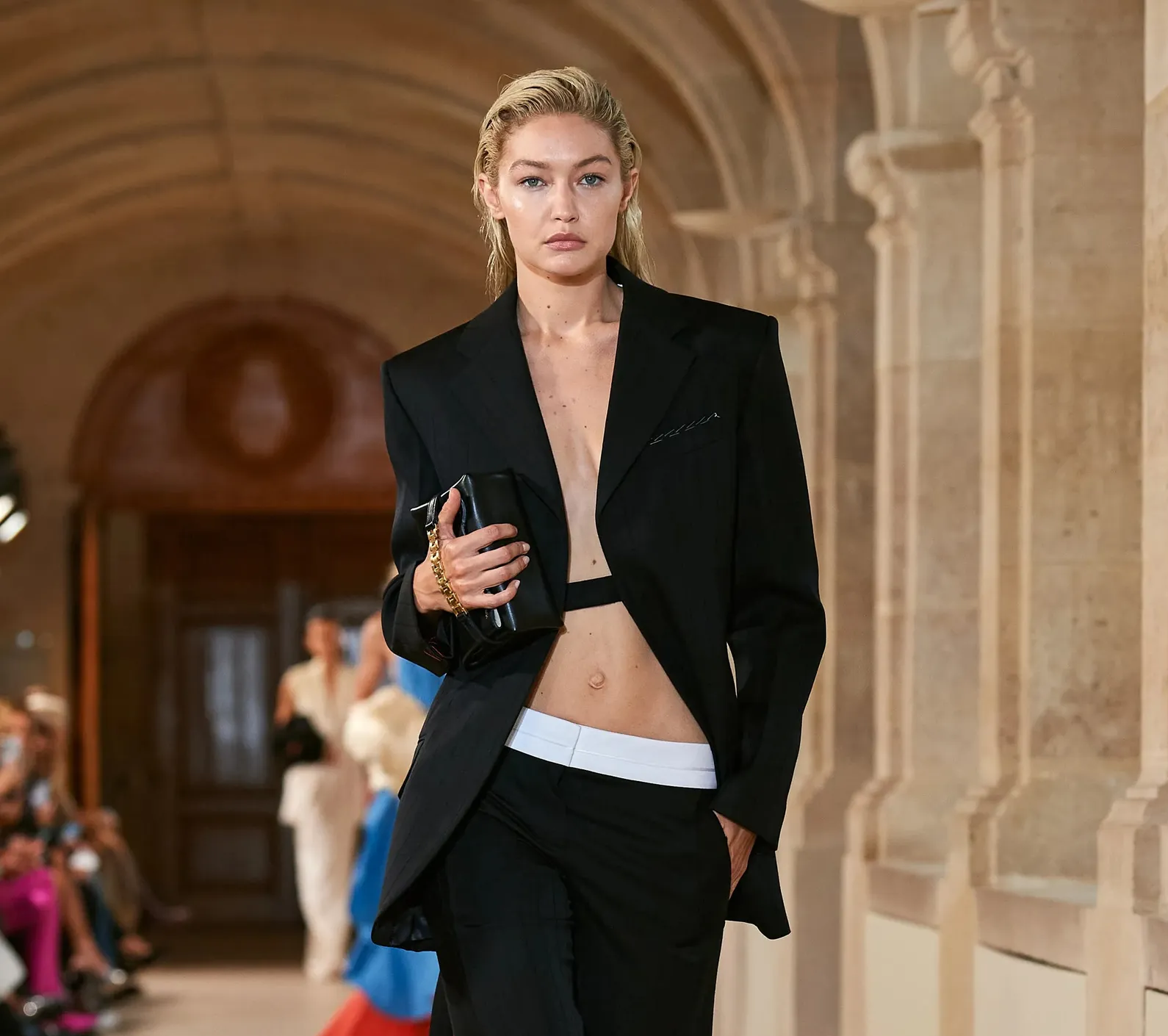
In the world of fashion, where flamboyance and opulence often take center stage, a new trend has quietly emerged, captivating the attention of celebrities, billionaires, and fashion enthusiasts alike. Known as “Quiet Luxury,” this viral and ultra-expensive fashion trend is causing waves in the industry, challenging the conventional notions of wealth display and style.
While many high-end luxury brands are known for their ostentatious and eye-catching designs, ‘Quiet Luxury’ takes a different approach. It revolves around the concept of dressing in understated, label-less clothing that exudes an aura of sophistication and exclusivity, despite its seemingly ordinary appearance. This trend has gained significant traction over the past few months, with influential figures embracing its allure.
So, what exactly is ‘Quiet Luxury’? At its core, it is a form of subtle wealth display, where the wealthiest individuals meticulously curate their attire with understated tones, simple cuts, and an absence of prominent logos. These seemingly unassuming garments, however, come with exorbitant price tags, often costing a small fortune.
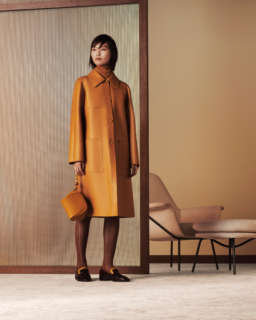
One notable incident that brought ‘Quiet Luxury’ into the spotlight was Gwyneth Paltrow’s appearance in court, clad in an impeccably tailored but discreet pantsuit. This choice perfectly exemplified the essence of ‘Quiet Luxury,’ showcasing the ability to convey elegance and affluence without resorting to overt displays of wealth.
The appeal of ‘Quiet Luxury’ lies in its ability to provide billionaires with a paradoxical blend of ordinariness and exclusivity. By adorning themselves in seemingly commonplace clothing, these individuals are able to blend in with the masses while exuding an air of refinement and extravagance. The garments they choose may appear unassuming to the untrained eye, but their true worth is hidden in the finest craftsmanship, luxurious materials, and meticulous attention to detail.
One prime example of this trend can be found in the wardrobe of Facebook founder Mark Zuckerberg, often seen sporting plain white or grey t-shirts that carry a hefty price tag. Such minimalistic pieces become the epitome of ‘Quiet Luxury,’ encapsulating the allure of hidden opulence within simplicity.
While ‘Quiet Luxury’ is not an entirely novel concept, its popularity has surged in recent times. The trend offers a safe and non-risky approach to fashion, favoring monochrome palettes, classic cuts, and timeless styles that are unlikely to fade away. This makes ‘Quiet Luxury’ an attractive option for those who seek to present themselves as both presentable and affluent, while also ensuring their fashion choices remain perpetually relevant.

In an era where ostentatious displays of wealth often dominate the fashion landscape, ‘Quiet Luxury’ stands as a captivating alternative, enticing the ultra-rich with its subtle allure. By embracing this trend, billionaires and celebrities alike have found a way to project their affluence with grace and sophistication, making a powerful statement without uttering a word.
As the influence of ‘Quiet Luxury’ continues to grow, we can only speculate on how this trend will shape the fashion industry in the coming years. Perhaps it will inspire a broader shift towards understated elegance and timeless style, encouraging individuals to redefine what it truly means to be fashionably wealthy.
-

 Style4 months ago
Style4 months agoBridal Guide : Best Looks of Radhika Merchant Ambani
-

 People4 months ago
People4 months agoThe Most Expensive Weddings Around The World
-

 Events2 months ago
Events2 months agoBest of Fashion Looks : Diya Krishna Wedding
-

 Automotive3 months ago
Automotive3 months agoMahindra Thar Roxx: Where Power Meets Style
-
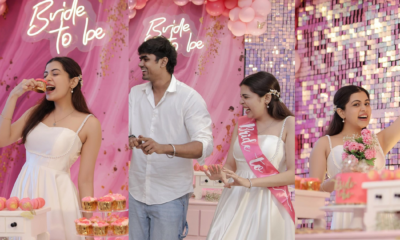
 Events3 months ago
Events3 months agoA Celebration of Love, Style, and Sisterhood :Diya Krishna’s Bridal Shower
-

 Events2 months ago
Events2 months agoThe L’Oréal Paris Show at Paris Fashion Week 2024
-

 news2 months ago
news2 months agoLaapataa Ladies: Kiran Rao’s Social Satire Becomes India’s Official Entry for the 2025 Oscars
-

 AD2 months ago
AD2 months agoPopular Curtain Fabrics to Consider for Your Home


